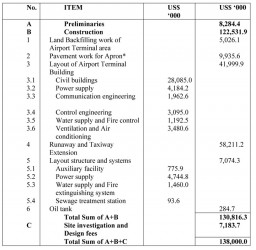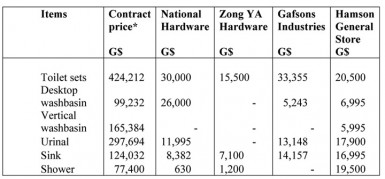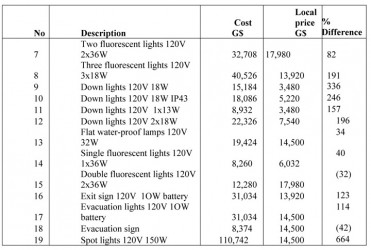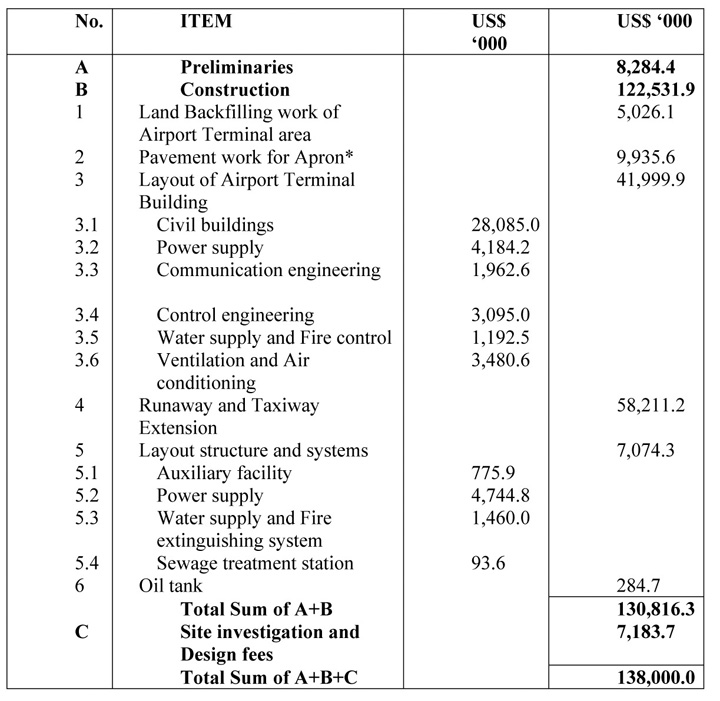Introduction
I wish to acknowledge the generosity of all those persons who have shared information and their time and expertise relevant to this column. They prefer anonymity, some because of fear of victimization. One non-Guyanese who lives abroad sent me a copy of the FIDIC Yellow Book referred to in the contract for the runway expansion which I earlier indicated I had some difficulty accessing. I am gratified and grateful too to the many engineers who have looked at the contract for the expansion of the runway and the construction of a new terminal building. This contract is a shocking tale of recklessness and irresponsibility on the part of the Ministry of Public Works and indeed the entire government which with its eyes open signed a contract that allows the contractor China Harbour Engineering Company Ltd of Beijing China to fleece this country.

Another person familiar with construction noticed that there is no provision in the contract for an engineer, let alone provisions regarding verifying the quantity and quality of the work done and signing off on payments. An architect described the design as the ugliest airport structure and layout he has seen, one that looks more like an industrial facility rather than anything close to a modern airport.
Jagdeo’s legacy
He wondered too in which decade Guyana will need an airport that caters for eight planes simultaneously, and whether the projections which someone shared with me and I shared with him are not irrationally exaggerated. In fact the feasibility study which appears to have been prepared to justify the expenditure rather than vice-versa was based on traffic generated by Red Jet and Ezee Jet which have long since disappeared. The sheer dishonesty comes to the fore when we remind ourselves that Robeson Benn admitted that there was only a narrow window to grab the Chinese money when the big man from Asia was passing through the region, only enough time for us to grab and no time for thinking. That is going to be one of Jagdeo’s lasting and costly legacies.
One person who was integrally involved in the Ogle Airport Expansion Project described the CJIA project as “nonsense” for which there is “no logical justification.” The Ogle Airport Development Programme saw the transformation of the facility with the extension of the 100 feet wide runway by 2,200 feet and the construction of brand new buildings and facilities. Those have resulted in the airport’s certification as a Category 2C operation capable of accommodating Regional Class Aircraft like the Turbo Prop, Dash 8s and ATR flights operated by LIAT and Caribbean Airlines, as well as executive type class aircraft. And the total cost: US$6 million.

unhesitatingly declined.
Financing
Below is a summary of the contracted cost for the works to be done by the contractor. As you digest these please remember from last week’s column the number of tasks to be done or financed by the government and that are additional to the US$138 million to be paid to the contractor, including some US$20.7 million as an advance payment. Since the financing agreement signed by Finance Minister Dr Ashni Singh with the Export-Import Bank of China was not entered into until November 2012, the initial money had to come from the Consolidated Fund. If the Chinese are good at one thing it is smiling whilst gouging as we see from the financing agreement as well.
Here are some of the features of that agreement:
1. Currency: The loan is in the Chinese currency the renminbi, and all the exchange risks are to be borne by Guyana. If the renminbi appreciates relative to the Guyana dollar, the cost of the loan goes up.
2. Interest: The rate of interest is 2% per annum but this is a disguise because a management fee of 0.75% is taken out upfront.
3. Taxes: No income or withholding taxes apply to any payment under the agreement, whether interest, management fee or commitment fee.
4. Use of proceeds: To be applied by the Government of Guyana for the sole purpose of payment of 94.2% of the contract with China Harbour. What the reader has to figure out is that much of the balance has to go to pay EXIM Bank a Management Fee of 0.75% and a Commitment Fee of 0.5% per annum.
5. Chinese ties: The goods, technologies and services are to be purchased from China “preferentially.” In another era before Guyana sold its soul, no government would have dared to give away its rights to say where and from whom it will buy goods and services.
6. Applicable law: China.
And to think that Sam Hinds and Robeson Benn thought there was such a thing as a free chow mein! I shudder to think what the Chinese think of all Guyanese.
The Shah’s toilets

Let us look at the comparable prices for sinks. The wholesale price charged by the contractor is $124,032 compared with $7,100 at Zong YA and $16,995 at Hamson. In other words, the contract price is 17 times that of Zong YA and 7.3 times the price at which Hamson sells them. The situation is hardly different with the other items.
* All prices in the contract are quoted in US dollars. For the purposes of this exercise and for simplicity, a rate of exchange of G$200 to US$1 is assumed, which understates the contract price.
Electrical items
For comparison I used one of the more popular stores specializing in industrial and domestic electric items most of which it imports from the UK. Perhaps because of this sourcing, the price differential is less dramatic, but still very significant. In two instances – evacuation signs and double fluorescent lights – the domestic prices are actually higher.
Conclusion
The above represent a small sample of items which are available locally and therefore permit comparison. I attempted a similar exercise for other items but because many are so broadly described, a comparison is not possible. Of course the broad and loose description suits the Chinese just fine – we cannot hold them to any standard. That does not mean that we should be any less suspicious about abuse. In fact, we need to be more concerned.
Next week we will look at whether the price disparities evident in those items which allow comparison extend to the runway extension and the construction of the new terminal building. Meanwhile, I hope that what is evident so far causes sufficient concern to demand a complete review of this project. Guyanese seem to have lost the capacity to be offended, shocked or even become angry. Maybe, just maybe, the toilets and urinals are the tipping point.





